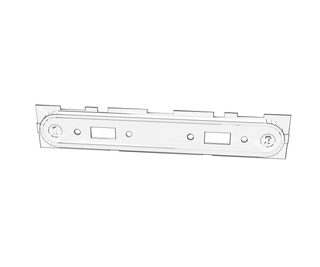Introduction: Pi SNES
I purchased an old non functional SNES and decided to put a Raspberry Pi inside to transform it into a retro-gaming emulator. The project is simple: graft a new heart to an "out-of-order" SNES. In order to modernize the controllers to play with other consoles and minimize the SNES destruction, I 3D-printed a new front panel. This making didn't require many electronic or computer skills. It 's more like a lego building.
Step 1: Parts List
I used :
- 1x Raspberry Pi B
- 1x HDMI extension cable
- 1x network extension cable
- 1x microUSB extension cable
- 2x USB extension cables (like this)
- 2x USB male connectors
- 1x mausberry chip (details here)
- 1x 5V sector adaptor (compatible SNES)
- 2x XBOX360 controllers
Step 2: The New Front Panel
The first step is to take the SNES apart and to cut all the unnecessary stuff inside in order to make some space.
Then I reproduced a more simple front panel on Sketchup and placed two USB connectors instead of the normal ones. I printed the piece on a friend's 3D-printer, removed the plastic needed to print correctly and fixed the USB connectors.
Finally, I tested the piece in place.
Attachments
Step 3: Connect Everything
Now that I have the front panel done, I need to work on the back panel and the buttons.
I cut a hole for the Ethernet connector, the HDMI fits well into the old image connector. I kept the power jack and connected a micro USB connector at the other side. I "hot glued" everything in place.
The start button is easy to manage. I unplugged it from the motherboard and reconnected it on the mausberry chip.
To keep the reset button up without the motherboard, I removed the button and placed it on a piece of board at the right place.
To show the life inside, I got the LED back from the controller board and put it back inside with hot glue. With this LED, you can check that the functional mess is working :).
Finally I connected everything, before creating the SD.
Step 4: Software Part
I decided to use Lakka as RetroPi distribution. It is a "nothing to do" distribution based on Openelec and the USB controllers are directly recognized. There is a clear tutorial on their website.
To use the mausberry circuit, you need to add some daemon code on the Pi. No problem: a tutorial is available here.
Load some games and have fun ! :)
I hope that you enjoyed reading this instructable and that you will create your own Pi SNES. Sorry if the English was not clear but I’m not a native English speaker.
You can find more DIY projects on our French blog.

Participated in the
Reuse Contest














